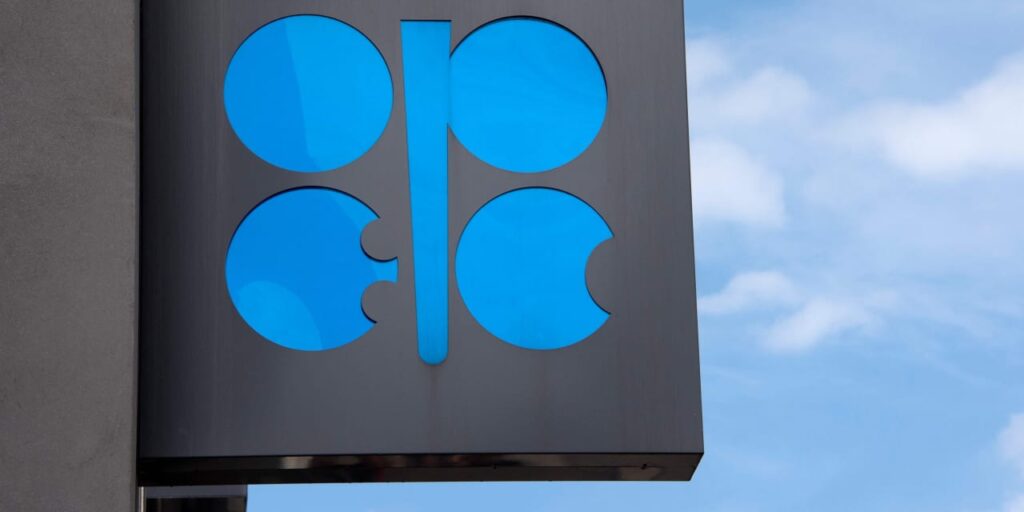It’s a bit surprising to see oil prices decline sharply after major oil producers pledged additional production cuts for the first quarter of next year, but that’s exactly what’s happened Thursday following a much-anticipated OPEC+ meeting.
Analysts said the voluntary nature of those added reductions had spawned skepticism over whether they will actually be delivered.
“What the market was hoping for was a unified voice on agreed-upon cuts,” Stewart Glickman, energy equity analyst at CFRA Research, told MarketWatch. “It sounds like it will be up to each voluntary contributor, and that brings up the issue of discipline,” he said.
The group of major oil producers, at first, did not mention additional reductions to production levels when it made its statement at the end of its ministerial meeting Thursday. Another press release followed, detailing voluntary cuts announced by OPEC+ members that would total more than 2 million barrels a day, or mbd, though that includes the extension of a 1 mbd cut by Saudi Arabia and a 300,000 barrels a day reduction in crude supplies by Russia. Russian fuel exports will also be reduced by 200,000 bpd starting in January.
News reports ahead of the meeting had said that the group agreed in principle to an additional production cut of up to 1 mbd, on top of the voluntary reduction by the Saudis. Analysts said the lack of detail on the voluntary cuts in the initial OPEC+ news release may have sparked some disappointment among traders.
“The voluntary cuts have nothing to do with the organization or with the coalition,” so each country separately started announcing its pledge for voluntary cuts, said Anas Alhajji, an independent energy expert and managing partner at Energy Outlook Advisors.
“These voluntary cuts are calculated from the 2024 required production level” agreed upon at the June 4, 2023 meeting and are in addition to the voluntary cuts previously announced in April 2023, which were later extended until the end of 2024, OPEC+ said.
“In order to support market stability, these voluntary cuts will be returned gradually subject to market conditions,” it said.
Still, Robbie Fraser, manager of global research and analytics at Schneider Electric, pointed out in a daily note that the commitments would come from a “broader coalition of smaller members” can pose a “challenge, as the compliance levels of smaller countries are often well below the compliance rates of larger members like Saudi Arabia and Russia.
Against that backdrop, oil prices declined sharply from the day’s highs. January West Texas Intermediate crude
CL.1,
CLF24,
fell $2.15, or 2.8%, to $75.71 a barrel on the New York Mercantile Exchange, down from a session high of $79.60.
January Brent crude
BRNF24,
which expires at the end of the trading session, was at $82.81 a barrel on ICE Futures Europe, down 29 cents, or 0.4%. The most-active February Brent contract
BRN00,
BRNG24,
traded at $80.90, down $1.98, or 2.4%.
Overall, OPEC acknowledges concerns over demand in 2024, but “we did not get certainty in the response, and so going forward there is a bit of skepticism here on whether the voluntary contributors will actually follow through,” said CFRA’s Glickman.
Read the full article here

